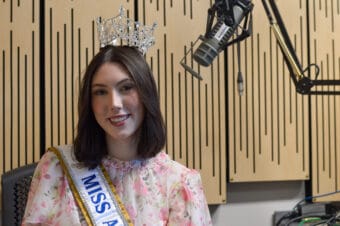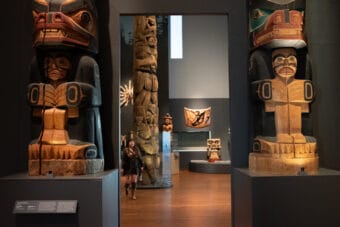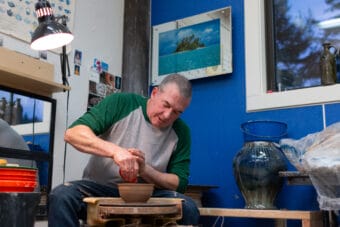View this post on Instagram
Quannah Chasinghorse, a Han Gwich’in and Oglala Lakota fashion model and climate justice activist from Fairbanks, is the most recent face on the cover of Vogue Mexico.
Chasinghorse said her phone started to buzz with messages as soon as the cover photo began circulating online. And it hasn’t stopped since.
Across Alaska, Indigenous women have told her that it marks an important turning point in how Alaska Natives are portrayed in the fashion industry and in mainstream media.
“I knew people would love it, especially Natives across the country,” said 18-year-old Chasinghorse during a recent interview. “And even, not just this country, like the world, Indigenous people all over, you know, seeing someone that looks like them. And being represented in that way, knowing that we all have similar stories.”
Chasinghorse said that during the photoshoot, the team of stylists, photographers and makeup artists told her they had never worked with a Native American model at that level before.
In addition to the cover, she’s also featured in a 20-page photo spread in the magazine, plus the story, “From model to role model: Quannah Chasinghorse is changing everything.”
Chasinghorse said she’s known since she was three years old that she wanted to be a model. But her career didn’t take off until about six months ago. Her first major photo shoot was alongside her brother last October for Calvin Klein. Shot by Alaska photographer Brian Adams, her image appeared worldwide on billboards, ads and social media. Afterward, several modeling agencies reached out with interest in signing her. She chose IMG Models.
View this post on Instagram
Before Chasinghorse became a model, she was gaining recognition for her climate justice advocacy.
Her mother, Jody Potts, said she knew her work in Vogue would resonate in Alaska.
“Because of how we support each other, you know, and rising and being a part of the mainstream media narrative. It’s just, it’s huge for everyone,” Potts said. “We’ve been so invisible-alized for so long. It’s finally awesome to come to see Native people on the cover.”
Chasinghorse said she feels that many Alaska Native women have connected with her because of the traditional tattoos on her face.
“I just feel like representing, with traditional, real tattoos done traditional hand-poke style on a cover of a magazine is also very huge,” she said. “I come from two different tribes, but I represent each and every one of them because I carry these ones with pride as my Gwich’in culture and I carry my Lakota nose with pride as well.”
Emily Edenshaw, who is Inupiaq/Yupik and the director of the Alaska Native Heritage Center, said that she was overcome with emotion when she saw Chasinghorse’s photo. Growing up, she had never seen Native people on the cover of big magazines.
“It’s historic, empowering and healing all in one,” Edenshaw said. “I’m so proud and I hope she will not be the last. She’s just as smart as she is beautiful. I am in awe of how she is using her platform to raise awareness about important issues such as climate change and subsistence rights.”
Former Miss Alaska 2017 Alyssa London found out about Chasinghorse’s cover of Vogue Mexico through the sharing and resharing of social media posts the day it was released last week. It’s powerful to see Chasinghorse on the cover because of the historic erasure of Indigenous peoples in mainstream media like TV, film and magazines, she said.
“She is gorgeous inside and out, which is evidenced by her commitment to using her platform for Indigenous rights. She has a big beautiful future ahead of her and a lot of people she’ll inspire and teach along the way. ” said London, who’s Tlingit from Southeast Alaska.
Raina Thiele, who is Athabascan and Yupik from the Bristol Bay region, said that she was proud that the photo showed Chasinghorse with her traditional tattoos, nose ring and Alaska Native earrings.
“They weren’t trying to like put her in this box,” said Thiele. “They were letting her be who she is, and they were letting her speak to the issues she wanted to speak to. That’s like a paradigm shift in the way that fashion and representation is progressing.”
Chasinghorse uses her platform as a model to advocate for Indigenous land rights, representation in media and awareness for missing and murdered Indigenous women. In 2019, the United States Department of Justice proclaimed May 5 as Missing and Murdered American Indians and Alaska Natives Awareness Day.
Potts, Chasinghorse’s mother, believes her daughter represents a positive counternarrative for Native women, who often feel targeted by negative stereotypes and stories about them as victims of violence.
“I think it’s such a revival for our people to see someone shine in their Indigenous beauty with their Indigenous features,” Potts said.



